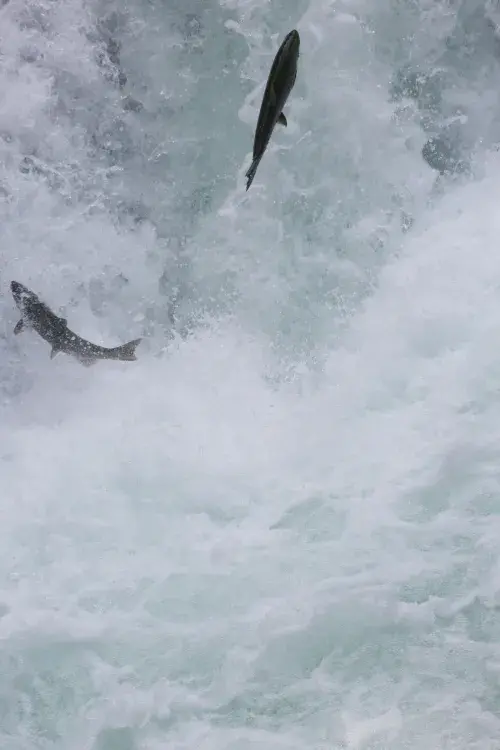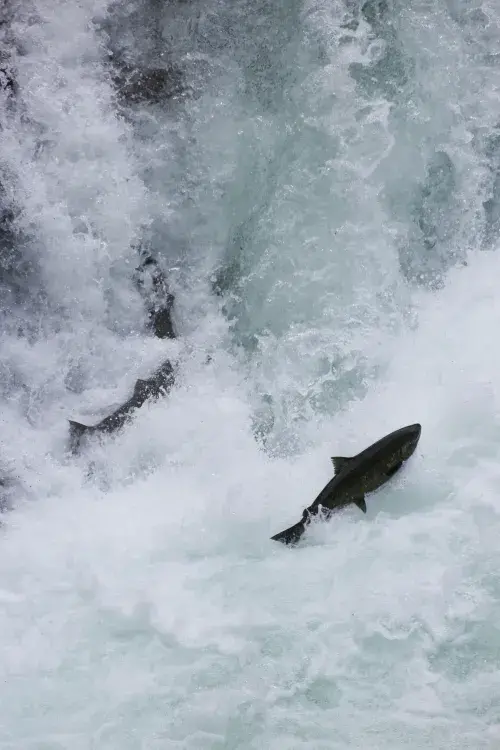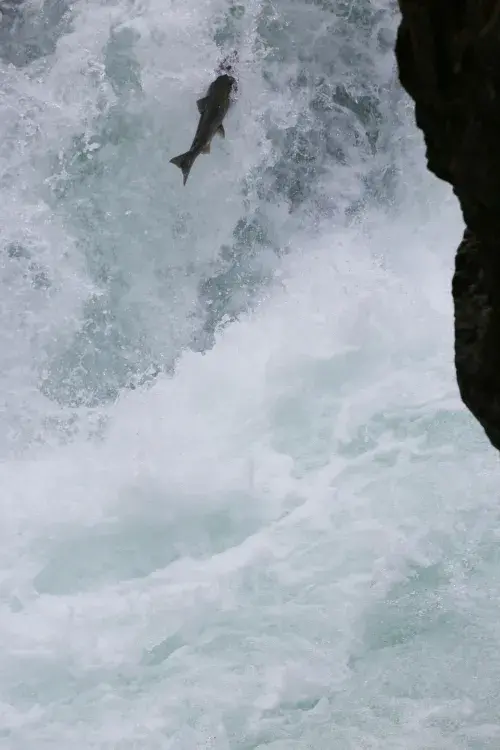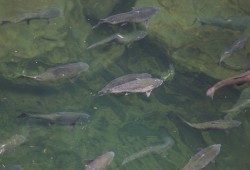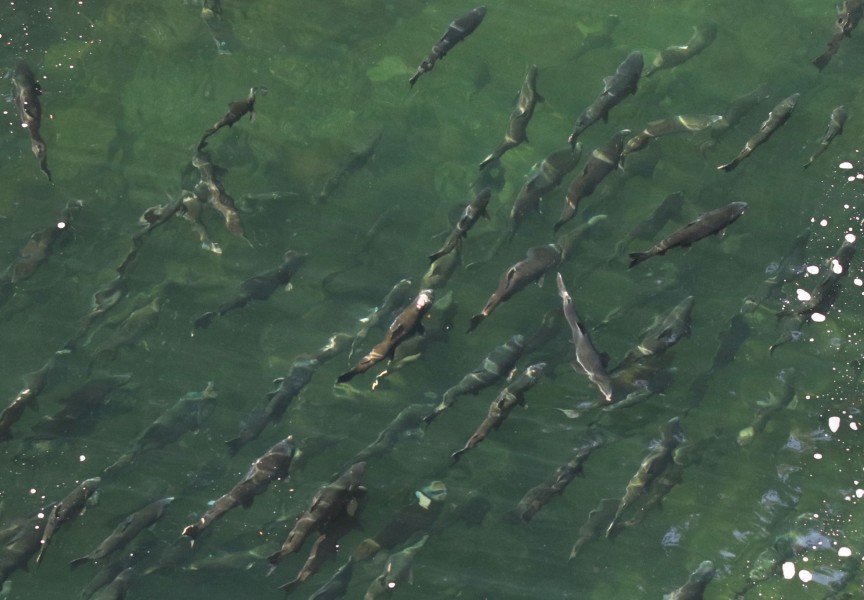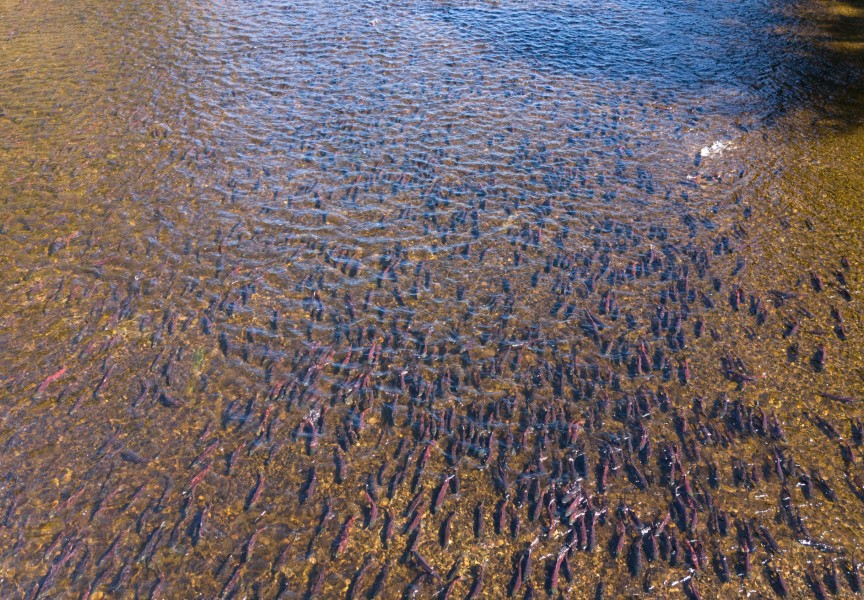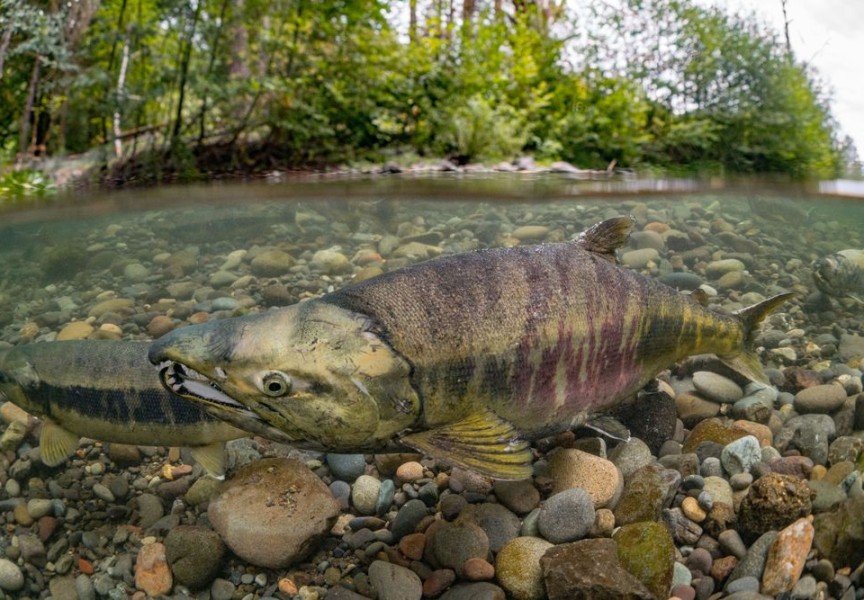Since July 13, Vancouver Island has been in a drought level five, making for an earlier dry season than last year. Some experts say that smaller salmon bearing streams could face impacts from the early drought if no substantial and sustained rainfall begins.
With last year’s drought causing weeks of delay, entailing salmon holding up and awaiting rainfall, this year is the first time that Jim Lane, manager of biologists with Uu-a-thluk, has seen extreme drought two years consecutively.
“It's the second year in a row,” said Lane. “I don't remember this happening two years in a row before, or this early.”
Though last year's drought was significant, said Lane, dry and low water flow conditions started in September and October. This year it began in late July.
For summers that have very little rain, it's normal for a section of smaller streams to dry up, explained Lane.
“It’s just a function of the way the hydrology works,” he said, adding that sediment from logging and other activity is also contributing to streams drying up. “The fact that we’re in such a drought means these things are happening much earlier in the season than they would have.”
According to the Pacific Salmon Foundation, drought conditions cause lower water flow and increased temperatures in rivers and streams where salmon run. These conditions cause stress, an increase in the burning of energy, and a decrease in oxygen absorption.
“We'll have to see if we get some significant rain to get things moving before the end of September,” said Lane, adding that cooler temperatures and sustained rainfall would be required to provide ideal environmental conditions for the salmon.
“We’re in a good place here compared to a lot of other systems,” said Graham Murrell, fisheries manager and a biologist for Hupačasath. “We have lots of control on the water flows coming from the lake so we’re able to maintain some minimal flows especially in the Stamp and down through the Somass.”
“We’re in a unique position to buffer some of those drought effects,” Murrell added.
Lane said that major streams in Nuu-chah-nulth territory will most likely be less impacted since they have higher levels of water.
“If we get a prolonged drought that's where we’ll see negative impacts to Coho,” said Murrell. “They go up all the little streams, they kind of go everywhere, and most of those streams are all dry right now.”
Though salmon are known to travel back to the streams they hatched in to spawn, Lane said that they will likely move to areas with increased water flow.
“You may find fish from one stream going to another one that has water just because they have to spawn,” said Lane. “They may not be able to get into the stream they want to go to.”
Lane explained that for the sockeye this year, they arrived before the drought conditions impacted them, though the Coho and Chinook are currently migrating.
“It’s hard to tell just what the losses are because they can come from very different sources,” said Lane. “You won’t really know until… three [or] four years from now, when you start looking at returns, adult returns, [and] if they’re significantly below… what is average.”
“In 2015 we had a hot [and] dry summer as well, and the rains, they arrived at the end of August,” said Murrell, adding that he hopes this year may also see similar rains to what happened eight years ago.

